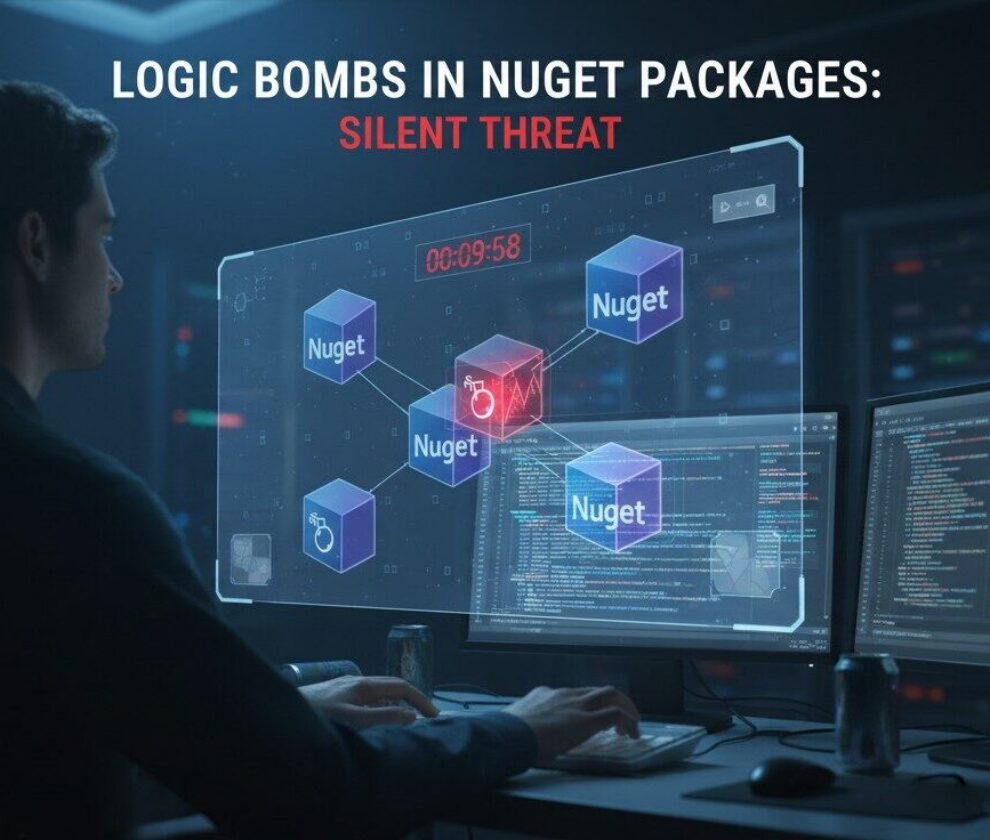Introduction
Software supply-chain attacks have emerged as one of the most critical threats in cybersecurity today. In recent news, a coordinated attack compromised over 40 packages listed on the npm registry, exposing significant risks presented by external library dependencies. Understanding how this attack unfolded and knowing the preventative measures are vital for developers and organizations alike.
How Did the Attack Happen?
At the core of this malicious campaign were modified versions of legitimate npm libraries. These compromised packages contained a malicious function named NpmModule.updatePackage. This function bypassed traditional security measures by surreptitiously altering the package.json file of affected libraries. Once altered, the file injected a malware payload, specifically a bundle.js script, which executed the attacker’s objectives.
The bundle.js script incorporated tools that appeared legitimate, such as a modified version of Truffle Scanner. Instead of its intended purpose, however, it was used to steal SSH keys and other sensitive information from developers. As a result, attackers could infiltrate private networks, deploy additional malicious payloads, or compromise critical infrastructure downstream through supply-chain dependencies.
The Larger Scheme
This attack demonstrates how deeply interconnected the ecosystem of open-source dependencies has become. By targeting commonly used npm libraries, attackers vastly increased their chances of widespread adoption of malicious code. The automated nature of dependency installations further exacerbated the risks, making the scale of potential damage almost limitless.
Key Vulnerabilities Exploited
The attack highlighted several weak points in software development practices and npm’s ecosystem:
- Lack of Dependency Auditing: Developers often rely on third-party libraries without rigorously auditing their codebases or verifying recent updates.
- Automation Over-simplification: Automating dependency updates without proper security scrutiny amplifies risks.
- Limited Awareness: Many organizations and developers lack awareness regarding supply-chain attack vectors and the measures needed to mitigate them.
How to Protect Yourself From Similar Attacks
Given the severity of the attack, there are several best practices and strategies that developers, organizations, and teams can implement to reduce the risk of falling victim to such supply-chain compromises:
1. Audit Your Dependencies
Conduct regular audits of all third-party libraries integrated into your projects. Utilize tools like npm audit or Snyk to detect vulnerabilities in dependencies. Pay particular attention to updates that introduce new maintainers or unexpected modifications.
2. Lock Your Dependency Versions
Employ lockfiles to ensure that your project consistently uses specific versions of dependencies, avoiding the automatic adoption of potentially compromised updates. Tools such as package-lock.json in npm help to guarantee this practice.
3. Implement Source Verification
Verify the integrity of the packages you install. Leverage code signing and integrity features to ensure that packages have not been altered maliciously. Reputable tools such as Sigstore make this task simpler to implement.
4. Educate Development Teams
Train your teams to recognize the wide-ranging implications of supply-chain dependencies. Awareness ensures that they remain vigilant and take proactive measures during their day-to-day development processes.
Organizations also should consider including supply-chain security modules in their training programs to keep everyone updated on emerging threats.
The Role of the npm Ecosystem in Mitigation
While individual precautions play a key role, the npm registry itself must lead efforts in preventing such attacks. Some areas where the npm and broader open-source community can bolster security include:
- Enhanced Moderation: Instituting stricter checks and balances for new library versions before approval and publication.
- Publisher Attribution: Enforcing verifiable identity requirements for package publishers to reduce the chances of bad actors infiltrating trusted ecosystems.
- Automated Scanning: Ensuring every package undergoes thorough automated reviews to detect anomalies or malicious payloads.
What Does the Future Hold?
The attack on npm packages marks another milestone in the evolution of cybersecurity threats targeting supply chains. As development ecosystems grow, so do their vulnerabilities. The need of the hour is to strike a critical balance between automation convenience and robust security measures that anticipate such attacks.
By being vigilant and adopting a proactive approach, we can collectively safeguard the development community. The responsibility lies equally on individuals, organizations, and registry maintainers to evolve a secure and resilient ecosystem.
Conclusion
The recent malware attacks on the npm registry serve as a stark reminder of the risks embedded in our software supply chains. With over 40 compromised packages, attackers demonstrated just how capable they are of exploiting dependencies for malicious gains. While these threats pose intimidating challenges, employing practices such as dependency audits, locked versions, and comprehensive team training can greatly reduce risks.
It’s vital that developers maintain a clear vision concerning security and make it a ubiquitous part of their workflows. Vigilance and collective responsibility remain the cornerstone of a safer development ecosystem.
If you’re looking to enhance your organization’s security posture or need professional insights into fortifying your development environment, contact our team at My Own Detective. With years of expertise, we’ll help you safeguard your software and infrastructure from emerging threats.


